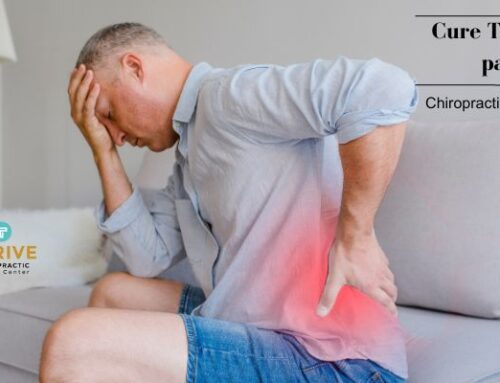Tailbone injuries can cause pain in simple activities like lying down, standing, or sitting. This is something athletes experience quite often, but hard falls can affect anyone. If your tailbone is already bruised or subluxated, a chiropractor can help. Chiropractors ease the pain and discomfort of injured patients.
What Is the Tailbone?
The coccyx, or tailbone, is the lowest part of the spinal column. After long periods of sitting, its appearance becomes obvious and uncomfortable. Healing damage to that bone is especially difficult to accomplish, especially when it is a simple fall that causes it.
Also, falling increases the pain and discomfort. Sitting for long periods makes the pain even worse. The coccyx’s vital importance is clear. If that part becomes dysfunctional, the ability to perform ordinary tasks in daily life is impaired.
What Causes Tailbone Injuries?

Tailbone injuries are most often caused by falling backward. People land on their buttocks and feel immediately excruciating pain in their tailbone muscles, and sometimes even bone may be out of alignment. Sitting for long periods at a time, particularly on surfaces or in positions that are uncomfortable or poor in quality, also can cause tailbone pain.
Since this injury gradually deteriorates, the misalignment is not detected until it becomes severe. Whether due to slips, sprains, or long days sitting cross-legged, tailbone injuries can range from acute pain to serious musculoskeletal conditions. However, it can be prevented through education about correct posture and choosing furniture designed to avoid these problems.
Chiropractic Solutions for Tailbone Pain
Tailbone injuries can be treated with great effectiveness by chiropractic care. A misaligned tailbone can cause inflammation and irritation of the nerves and tissue. Chiropractors can also alleviate the discomfort by repositioning the tailbone, doing tailored exercises, having a stretching routine, and icing the injured area.
Below are different chiropractic solutions for tailbone pain:
1. Pelvic alignment
Pelvic dysfunction is an important factor contributing to the patient’s discomfort. Injury to the tailbone results in stiffness and swelling in the adjacent muscles. Chiropractic treatment involves direct manipulation of the pelvis and coccyx bone to restore normal function.
This targeted method is effective in reducing inflammation in the muscle and reducing compression in the pelvic region. Therefore, the muscles will gradually return to their normal state, causing pain to diminish and comfort to increase while sitting or moving about.
The treatment does not just alleviate the temporary pain caused by injury but strives to bring overall wellness within the region of the pelvis. This is accomplished by encouraging a physiologically normal interaction of the musculoskeletal system.
2. Spinal adjustment

When bones fall out of their normal place within the body, they press in all directions on neighboring nerves and tissues. Depending on the exact misalignment, this displacement can cause a feeling of tightness in the muscles or tightness in elongation.
If this lack of alignment is not resolved, the pressure can accumulate, which may lead to the onset of sharp or long-term pain in people. Chiropractors use soft, non-surgical techniques to adjust the bones into the proper position.
Besides relieving pain, the realignment also restores the patient’s mobility. After chiropractic treatment, some patients will notice an enhanced improvement in the range of their movements, which is the positive effect of correcting the patient’s bone alignment.
3. Hot and cold therapy
Hot and cold therapy are frequent parts of treatment for tailbone pain in the chiropractic profession. Heat therapy is key in the recovery of surrounding muscles that are injured or swollen around the tailbone. It also manages to improve the flexibility of the muscles as well as gradually restore their power of movement following an accident.
Heating also helps speed up healing, as well as alleviating pain in the patient. On the other hand, cold therapy can work to alleviate inflammation caused by injury. Cold therapy simply slows down the blood flow to the injured area, reducing swelling in the surrounding tissues.
Furthermore, the colder temperatures can temporarily stop nerve activity, reducing pain. Using a holistic approach by combining hot and cold therapy, individuals with tailbone pain receive relief while assisting the body’s natural healing process.
4. Immediate treatment
Though chiropractic treatment may be uncomfortable for some people, it is important to point out that it is not a painful procedure. Interestingly, patients can stop the treatment at any time and the whole process can be completed in as little as five minutes.
The speed at which this treatment is delivered allows chiropractors to immediately treat problems within the tissues around the pelvis and spine. The area’s healing can be promoted and the patient sent back to normal function much sooner than before.
The method is very effective. If it is done right, a chiropractor can make large adjustments within only a few sessions, so that prolonged discomfort can be avoided. Therefore, patients can confidently accept chiropractic care, in the knowledge that the limited and controllable duration of the sessions adds to the benefit of health.
5. Instruction on proper body maintenance
Guiding post-care is an essential aspect of the recovery process. Due to bad body mechanics, many patients have poor spinal posture throughout the day. Chiropractors are in the ideal position to teach their patients the proper way to sit, lie down, and even do harmless activities such as dozing off.
Furthermore, chiropractic treatment post-care routinely incorporates stretching exercises. Those exercises, which can be practiced regularly, strengthen tendons and ligaments, making injury less likely in the future. In some cases, chiropractors will suggest the use of a supportive pillow after treatment.
Adding such a pillow into your routine after chiropractic treatment can shorten the healing period and provide continuing support for the coccyx. This is particularly important in the case of grave injuries when recurrent injuries are high.
Conclusion
Chiropractic treatment offers effective relief for tailbone pain. Chiropractors adjust their methods to the individual situation, continue to provide direction aftercare, and offer various aids such as ergonomic pillows to help the source and then support. For tailbone discomfort that will not go away, try chiropractic interventions.








